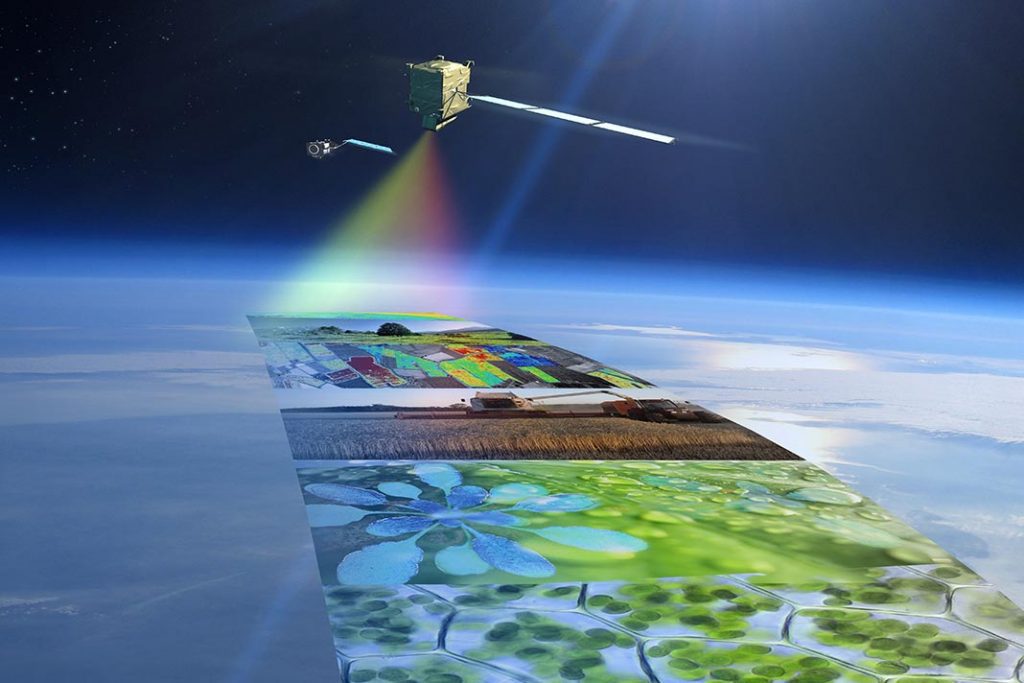Introduction:
In today’s data-driven world, big data has become a buzzword that evokes both excitement and skepticism across various industries. As an exponential increase in data continues to reshape our understanding of the world, it’s high time we embrace the power of big data, particularly in the field of environmental science. I firmly believe that big data has the potential to revolutionize the way we study and address pressing environmental challenges. By tapping into the vast wealth of data at our disposal, we can uncover new insights and develop innovative solutions to safeguard our planet’s future.
The Evolution of Environmental Science and the Game-Changing Emergence of Big Data
Environmental science has come a long way since its inception as a multidisciplinary field focused on understanding the complex interactions between humans and the environment. Traditional methods of data collection and analysis, while effective to a certain extent, have often been plagued by issues such as limited sample sizes, human error, and inadequate resources. These limitations have hindered our ability to fully comprehend the intricacies of environmental systems and develop effective strategies to address pressing concerns such as climate change, pollution, and biodiversity loss.
Enter big data: the massive trove of information generated every second by sources as varied as social media, satellites, and sensors. This data deluge has led to a paradigm shift in scientific research, with big data analytics tools offering unprecedented insights into complex systems. The sheer volume, variety, and velocity of big data allow researchers to identify patterns and trends that were previously impossible to detect.
I am convinced that big data is the missing piece of the puzzle in environmental science. By leveraging this powerful resource, we can overcome the limitations of traditional research methods and gain a more comprehensive understanding of the Earth’s ecosystems. Additionally, big data enables us to monitor environmental changes in real-time, providing us with critical information needed to make informed decisions and implement effective conservation strategies. As we continue to grapple with the urgent need to address environmental challenges, big data will undoubtedly play an increasingly crucial role in shaping our response.
How Big Data is Revolutionizing Environmental Research and Monitoring
Climate change is arguably the most pressing environmental issue of our time, and understanding its complex dynamics requires vast amounts of data. I am confident that big data will play a pivotal role in enhancing our comprehension of this global phenomenon. By analyzing massive datasets from various sources, such as satellite imagery, weather stations, and ocean buoys, researchers can now study climate patterns with greater precision and accuracy than ever before. This wealth of information allows us to better predict future climatic trends and develop targeted mitigation strategies to combat the adverse effects of climate change.
Read more about Environmental Big Data for Climate Change: Benefits, Challenges, and Applications
Biodiversity loss is another alarming environmental challenge we face today. Fortunately, the rise of big data offers new opportunities for monitoring ecosystems and assessing species populations on a scale previously unimaginable. Remote sensing technology combined with advanced data analytics tools can help track changes in land cover or detect illegal deforestation activities in real-time. Additionally, citizen science initiatives that encourage people to contribute their observations through platforms like iNaturalist or eBird generate valuable data on species distribution and abundance. These large-scale datasets enable researchers to identify threats to biodiversity more effectively and devise informed conservation measures.
Read more about How technology can help conserve biodiversity
The sustainable management of natural resources is essential for maintaining ecosystem health and ensuring human well-being. In my opinion, big data has immense potential to transform how we approach resource management by providing comprehensive insights into resource availability, usage patterns, and environmental impacts. For instance, water managers can utilize real-time sensor data from rivers and reservoirs to optimize water allocation or monitor water quality more efficiently. Similarly, mining companies can leverage geological databases alongside remote sensing information to minimize negative environmental consequences while maximizing resource extraction efficiency.
The Unparalleled Advantages of Big Data in Environmental Science
One major advantage of incorporating big data into environmental science lies in its ability to improve accuracy and efficiency in data collection efforts significantly. Traditional methods often involve manual fieldwork that is both labor-intensive and susceptible to errors; however, harnessing the power of big data enables scientists to gather precise information from multiple sources rapidly without compromising reliability.
In my view, one of the most exciting prospects offered by big data is its potential contribution towards developing sophisticated predictive models for various environmental phenomena – from climate variability to species population dynamics. Machine learning algorithms trained on massive datasets can uncover hidden relationships between variables that were previously unattainable through conventional statistical analyses alone. A great example of this is Microsoft’s MegaDetector model which detect animals, people, and vehicles in camera trap images.
Environmental challenges are inherently multifaceted problems requiring input from diverse scientific disciplines working together towards common goals. Embracing a collaborative approach driven by shared access to extensive datasets has the potential to break down barriers between fields such as ecology, climatology, geography, economics, policy-making—ultimately fostering innovative solutions tailored towards addressing urgent environmental concerns collectively.
Lastly, I contend that one significant yet underappreciated benefit offered by embracing big-data methodologies lies within its capacity for identifying emerging trends or unexpected correlations buried deep within mounds of seemingly unrelated information – ultimately paving the way for groundbreaking discoveries capable not only informing but also transforming our collective response towards preserving Earth’s delicate ecological balance.
The Bold Future of Big Data in Environmental Science
The field of big data is continuously evolving, with groundbreaking innovations poised to redefine the landscape of environmental research. Among these advancements are the Internet of Things (IoT) and blockchain technology, both of which hold immense potential for transforming how we collect, analyze, and share environmental data.
IoT: The Internet of Things refers to the network of interconnected devices embedded with sensors, software, and other technologies that communicate and exchange data with one another. In the context of environmental science, IoT can enable real-time monitoring and management of natural resources by collecting invaluable information from various sources such as water quality sensors, air quality sensors, soil moisture probes, or wildlife tracking devices. This wealth of data will provide researchers with unprecedented insights into ecosystems’ health while facilitating rapid responses to emerging threats or changes.
Blockchain: As a decentralized digital ledger system, blockchain offers enhanced transparency, security, and traceability for data transactions—making it particularly well-suited for addressing concerns related to data integrity and privacy in environmental research. By leveraging blockchain technology, scientists can confidently share sensitive information while ensuring its veracity and preventing unauthorized access or tampering.B. The inevitable role of AI and machine learning in advancing big data applications
Artificial intelligence (AI) and machine learning are already playing a transformative role in various industries, including environmental science. As these technologies continue to mature alongside IoT-driven datasets and blockchain-enabled sharing platforms, their integration with big data analysis will become increasingly prevalent—further enhancing our ability to model complex systems, predict outcomes, and identify patterns hidden within vast datasets. By harnessing the power of AI-driven analytics tools combined with IoT-generated information secured via blockchain networks, we can unlock insights previously unimaginable—ultimately propelling the field of environmental science into uncharted territory.
As we look towards the future, it’s essential to imagine how big data could revolutionize environmental science even further by exploring new applications or untapped research areas:
- Developing “smart” cities designed around sustainability principles informed by extensive urban planning datasets gathered through IoT infrastructure while utilizing blockchain for secure resource allocation.
- Harnessing the power of genomics coupled with bioinformatics driven by IoT-enabled precision agriculture techniques for targeted conservation strategies based on genetic diversity assessment within ecosystems—all underpinned by blockchain-based sharing platforms ensuring reliable access to vital genomic information.
- Utilizing advanced geospatial analytics powered by satellite imagery integrated seamlessly alongside ground-level sensor inputs derived from wide-ranging IoT networks for proactive disaster risk reduction through early warning systems or optimized land-use planning—with all relevant stakeholders securely exchanging crucial geospatial information via interoperable blockchains.
Conclusion
In conclusion, I am firmly convinced that embracing big data holds immense promise for revolutionizing our understanding of Earth’s complex environmental systems while enabling us to develop innovative solutions tailored explicitly towards confronting pressing ecological challenges head-on. Although obstacles such as addressing the digital divide remain prevalent concerns demanding urgent attention—ultimately forging ahead by leveraging this powerful tool represents an exciting prospect capable not only informing but actively shaping our collective response towards safeguarding our planet’s fragile ecosystems now more than ever before.
Next Steps
Round Table Environmental Informatics (RTEI) is a consulting firm that helps our clients to leverage digital technologies for environmental analytics. We offer free consultations to discuss how we at RTEI can help you.


